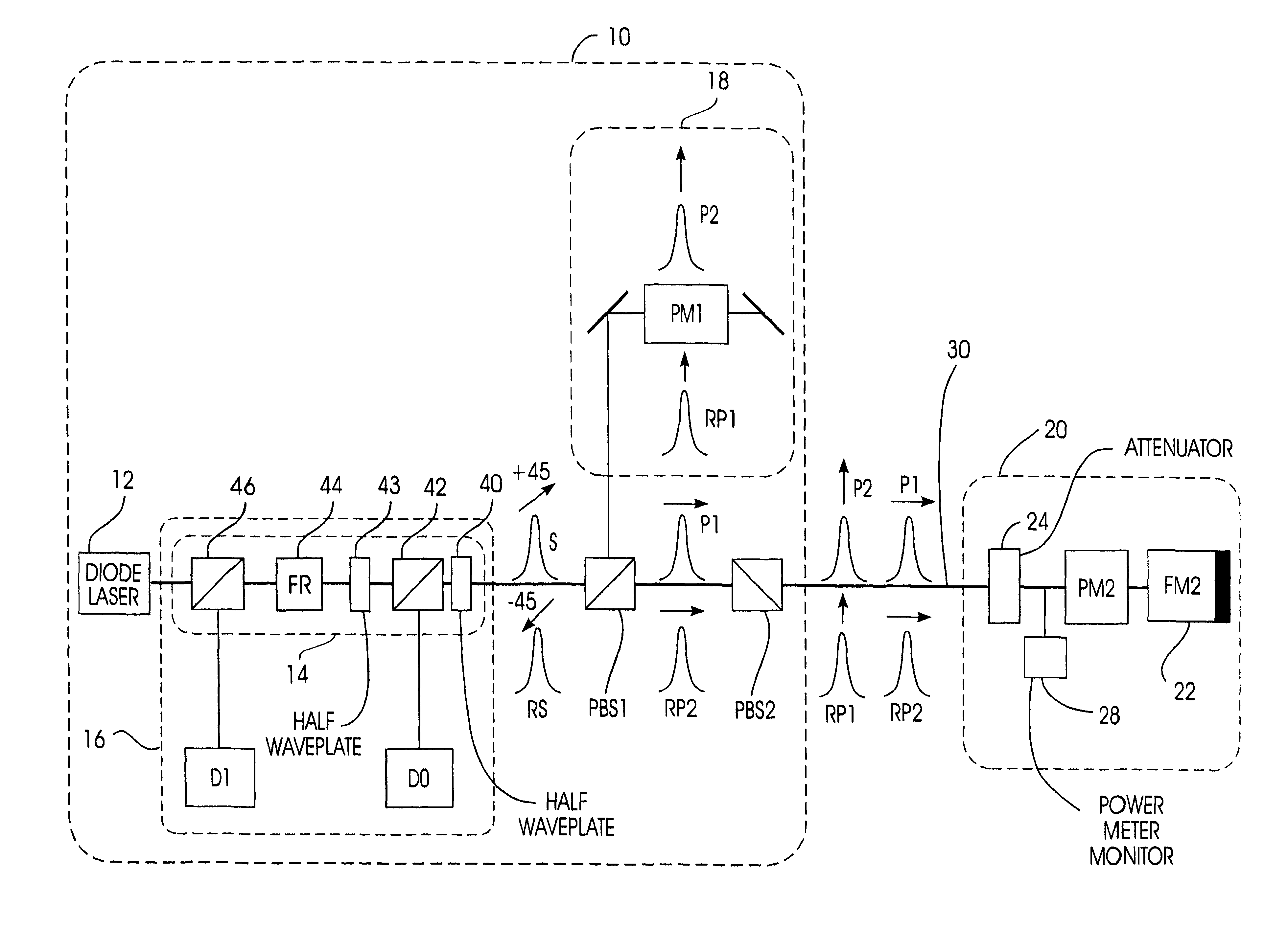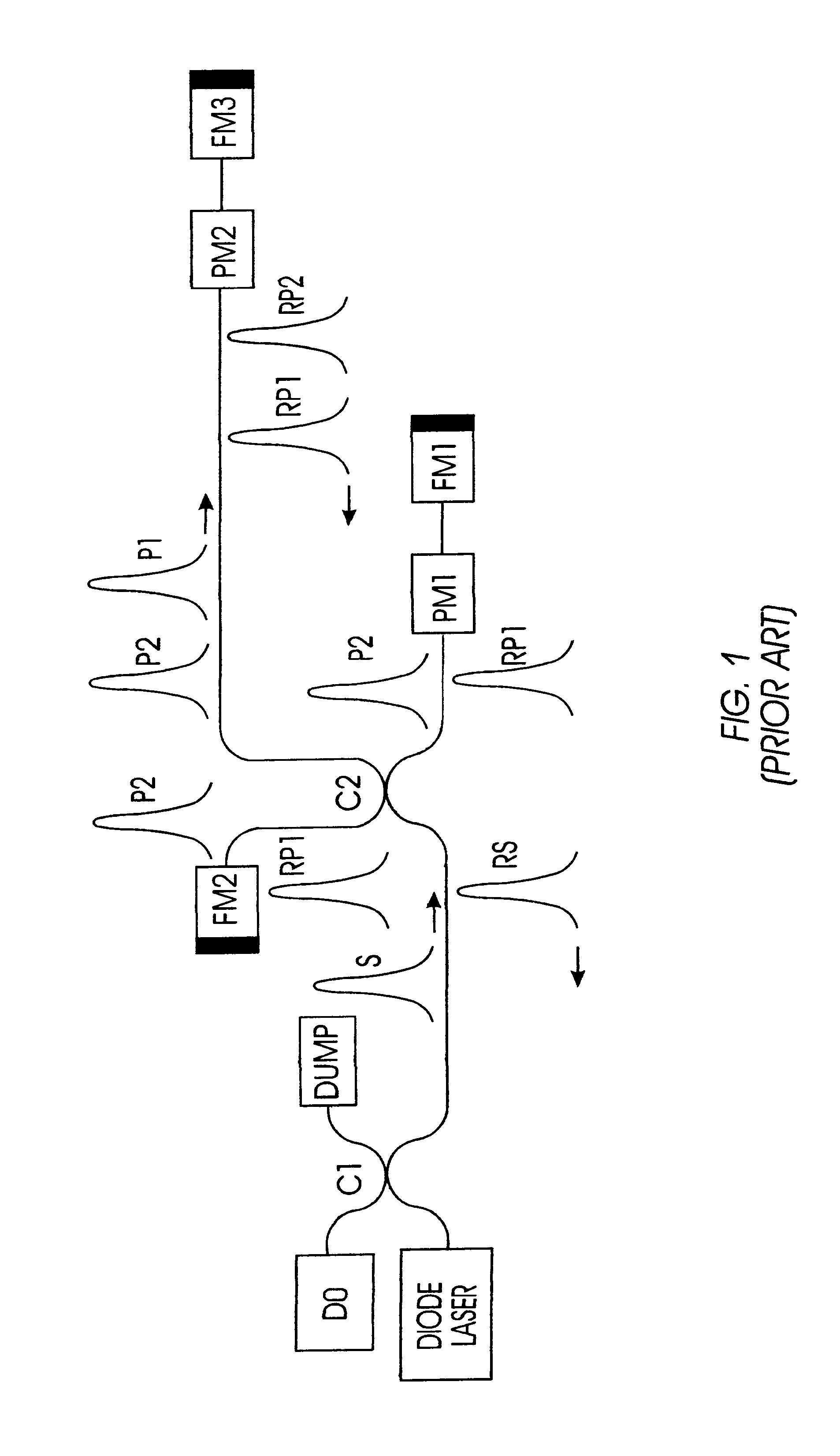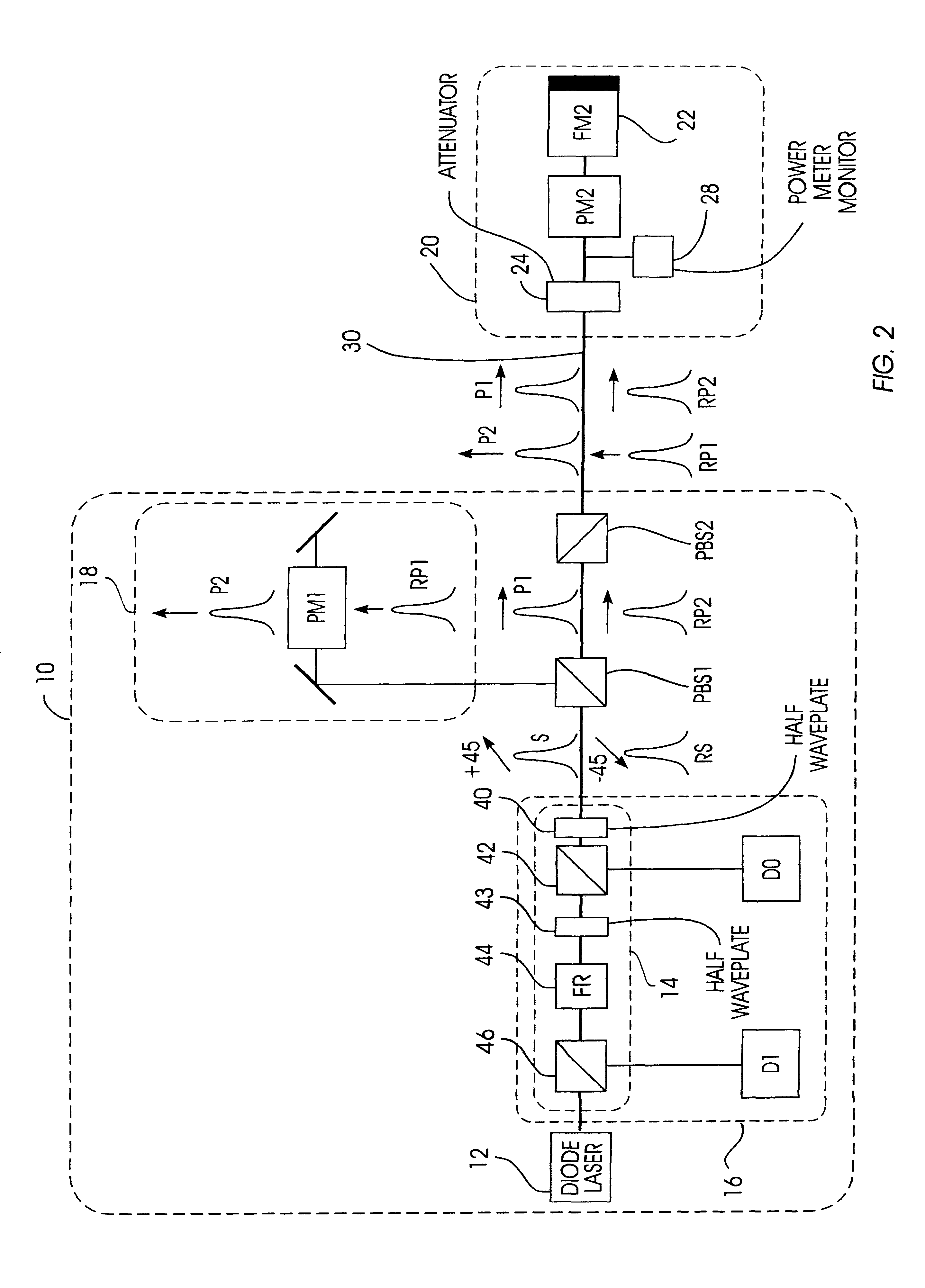Autocompensating quantum cryptographic key distribution system based on polarization splitting of light
a quantum cryptographic key and distribution system technology, applied in the direction of digital transmission, securing communication, electrical equipment, etc., can solve the problems of limiting the bit transmission rate, affecting the transmission rate, and affecting the proportion of the bi
- Summary
- Abstract
- Description
- Claims
- Application Information
AI Technical Summary
Problems solved by technology
Method used
Image
Examples
Embodiment Construction
Referring to FIG. 2, an overall schematic of the communication channel for distribution of quantum cryptographic key information is illustrated. The channel includes a first channel end 10 that contains a light source, such as a diode laser 12, for generating discrete light signals, a second channel end 20, and an optical link 30, such as an optical fiber, connecting the two channel ends 10, 20. The invention will be described in FIG. 2 and subsequent figures with bulk optical components. The communication channel is applicable to free-space optical communication as well as fiber-optic communication. The bulk optical components described have equivalent functions in commercially available fiber-optic components.
The first channel end 10 includes the diode laser 12, a polarization preparation and laser isolation stage 14, a detection stage 16 for detecting the return light signal from second channel end 20, first and second polarizing beamsplitters PBS1 and PBS2, and a first phase mod...
PUM
 Login to View More
Login to View More Abstract
Description
Claims
Application Information
 Login to View More
Login to View More - R&D
- Intellectual Property
- Life Sciences
- Materials
- Tech Scout
- Unparalleled Data Quality
- Higher Quality Content
- 60% Fewer Hallucinations
Browse by: Latest US Patents, China's latest patents, Technical Efficacy Thesaurus, Application Domain, Technology Topic, Popular Technical Reports.
© 2025 PatSnap. All rights reserved.Legal|Privacy policy|Modern Slavery Act Transparency Statement|Sitemap|About US| Contact US: help@patsnap.com



